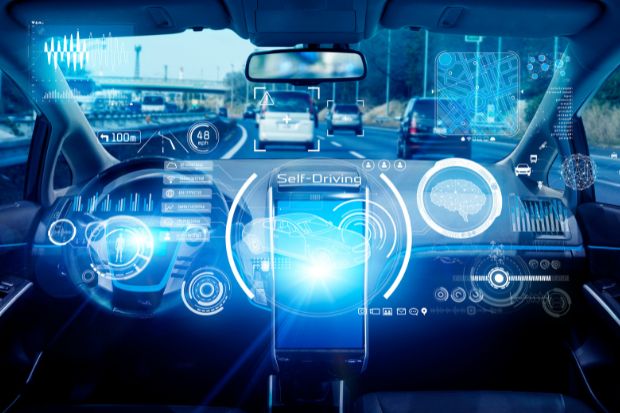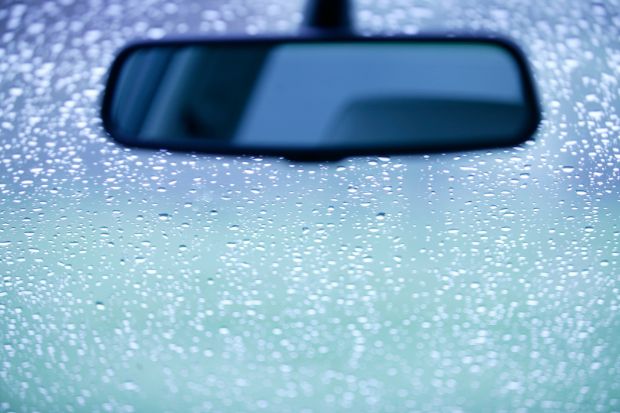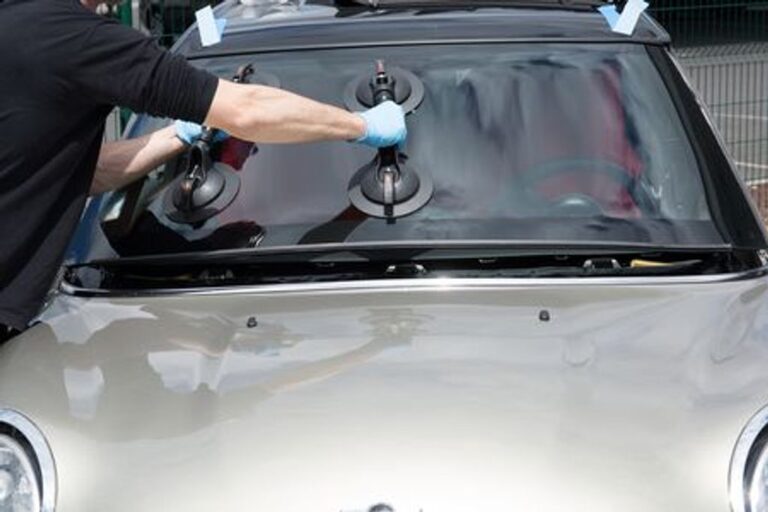Best Tips To Rain Proof Your Windshield Rain is a...
Advanced Driver Assistance Systems: A Complete Guide

Driving is a skill that can be improved with the help of technology. Driver assistance systems allow you to focus on driving, while they take care of everything else. They have saved countless lives and prevented countless car accidents by warning drivers about potential hazards in their path ahead. In this guide, we’ll explore some of the top features available on cars today:
The basics
Advanced driver assistance systems (ADAS) are an important part of the automotive industry, as they can help drivers to drive safely and confidently. They provide a range of features that allow you to drive your car more safely, including:
- Braking – For example, it may warn you if someone is coming up behind you or if there’s too much weight on the brakes.
- Steering – The steering wheel might be able to detect whether your steering is too tight for comfort or not tight enough for control when driving at high speeds. This allows the vehicle’s computer system to make adjustments so that it feels more natural for you when using them.
- Lane-keeping assist – This feature helps keep vehicles centered within their lanes by monitoring distance from other cars ahead in both directions around corners and curves along roads where lane markings aren’t present on some stretches—such as highways where there could be several lanes going into opposite directions at once! It uses radar sensors mounted inside each side view mirror glass panel (which are frequently called “lamps” instead).
Adaptive cruise control
Adaptive cruise control is a system that keeps the car at a set distance from the vehicle in front. It helps avoid sudden braking and helps you stay in your lane, which can be especially helpful when merging onto highways or interstate freeways.
When set up correctly, adaptive cruise control can also make driving at night much safer by keeping your speed constant while adjusting itself according to the speed of traffic around you. This means that if there are slower vehicles ahead, your car will slow down automatically so as not to get too close; conversely, if there’s more space between yourself and those on either side (or behind), your speed will increase until it matches theirs again—a feature known as “following distance.”
Forward collision warning
Forward collision warning (FCW) is a system that alerts the driver when it detects that a collision with another vehicle or an object is imminent. FCW systems use sensors to detect if a crash is imminent, such as via radar or lidar, and then use sound and visual warnings to alert drivers to potential danger before impact occurs.
FCWs can provide warnings in two ways:
- A visual indicator appears on dashboards of vehicles equipped with FCW technology, indicating the direction and speed of approaching vehicles. This information allows drivers to prepare for potential crashes by taking evasive actions such as braking or swerving out of harm’s way.
- If an actual crash does occur, then LEDs flash red (to warn drivers to slow down), the horn blares loudly (to get attention quickly), windshield wipers activate automatically (keeping raindrops off your eyes), and seatbelts tighten automatically if they’re not already fastened securely enough; airbags deploy; windows go up/down depending on whether they’re open or closed at this point in time
Automatic emergency braking
Automatic emergency braking (AEB) is a feature that helps prevent accidents by autonomously slowing or stopping your vehicle when it detects an impending collision with another vehicle or pedestrian. It can also help prevent injuries and fatalities by reducing the impact of a crash, especially in situations where you couldn’t have avoided it even if you were fully alert.
The technology is already used on many vehicles as standard equipment; however, some newer models still lack AEB functionality because automakers are currently testing new algorithms for this feature before rolling them out across their entire fleets. In addition to potential safety benefits, AEB offers other benefits like reduced fuel consumption and CO2 emissions by keeping engines idling longer at stop signs instead of accelerating immediately upon detecting an obstacle ahead—this can result in savings up to $400 annually per driver!
Lane-keeping assist
Lane-keeping assist is a feature that keeps the car in the lane and uses a camera and sensors to detect lane markings. It will vibrate the steering wheel if you leave the lane, which can be used in combination with adaptive cruise control to help keep you from drifting out of your lane.
Blind-spot monitoring
Blind-spot monitoring is a feature that uses radar to detect objects in the vehicle’s blind spots. It works similarly to other driver assistance systems, such as lane keep assist and rear cross-traffic alert. The system tracks where you’re looking in your mirrors and then alerts you when something comes into view behind your vehicle that could potentially cause an accident if not detected.
This type of system can be used for two reasons: first, it helps drivers avoid collisions with vehicles or pedestrians crossing the street; second, it prevents drivers from having to move over into another lane when they encounter something unexpected (such as someone walking across their path).
Rear cross traffic alert
The rear cross-traffic alert is a feature that can be found on many vehicles, including those from Audi and Mercedes-Benz. It uses radar to detect nearby vehicles and displays an indication on the center display of how far away they are. This will help you see vehicles approaching from behind, as well as ones approaching from the side or front. If there’s an imminent danger of hitting something behind you, this feature will warn you immediately with a flashing light and sound alert.
Surround-view cameras
Surround-view cameras are a type of camera system that can be used to help drivers avoid accidents, park their cars, and even get into the correct position.
The first application is for collision avoidance. Cameras mounted on the front bumper will detect if another vehicle is approaching from behind, so it’s possible to brake quickly before impact occurs. This technology has been available since 1999 and was pioneered by Volvo Cars. However, as with most driver assistance systems (DAS), it has only been adopted by larger manufacturers such as Mercedes-Benz who now offer several different models featuring surround view technology including Rear Assist Plus and Active Distance Assist with Pedestrian Monitoring II Plus which includes pedestrian detection capability along with forward collision warning systems.
Conclusion
Driving can be a stressful experience, but with these technologies at your disposal, you don’t have to worry about making mistakes on the road. These systems will help you stay alert and aware of your surroundings so that when the unexpected happens—like someone changing lanes without signaling—you’re ready to react without any hesitation at all.
Popular Searches
Audi Windshield Replacement in Santa Clara County
Auto Car Window Tinting in Santa Clara County
Auto Glass Repair and Replacement in Santa Clara County
Auto Glass Repair in Santa Clara County
BMW Windshield Chip Repair in Santa Clara County
BMW Windshield Repair and Replacement Services in Santa Clara County
Car Window Repair in santa clara
Car Window Repair in Santa Clara County
Commercial truck windshield replacement
Dodge Windshield Repair and Replacement Services in Santa Clara County
Dodge Windshield Replacement in Santa Clara County
Glass repairs for cars near me
Honda pilot windshield replacement cost
Honda Windshield Repair and Replacement Services in Santa Clara County
Honda Windshield Replacement in Santa Clara County
Hyundai Tucson windshield replacement
Hyundai Windshield Repair and Replacement Services in Santa Clara County
Hyundai Windshield Replacement in Santa Clara County
Jeep Windshield Repair and Replacement Services in Santa Clara County
Jeep Wrangler Windshield Replacement in Santa Clara County
Kia Windshield Repair and Replacement Services in Santa Clara County
Kia Windshield Replacement in Santa Clara County
Mobile Auto Glass in Santa Clara County
Mobile Auto Glass Repair in Santa Clara County
Mobile glass replacement near me
Same day windshield repair near me
Toyota Camry side mirror glass replacement
Windshield Calibration in Santa Clara County
Windshield Chip Repair in Santa Clara County
Windshield chip repair near me
Windshield Repair and Replacement Services in Santa Clara County
Windshield Repair and Replacement Services Near Me
Windshield Repair in Santa Clara County
Windshield repair service near me
Windshield Replacement Near Me
Windshield Replacement Services in Santa Clara County
Read more Articles
Which Are The Best Windshield Brands For Your Car?
Which Are The Best Windshield Brands For Your Car? If...
Why does a windshield need to be calibrated?
Why does a windshield need to be calibrated? A car’s...



